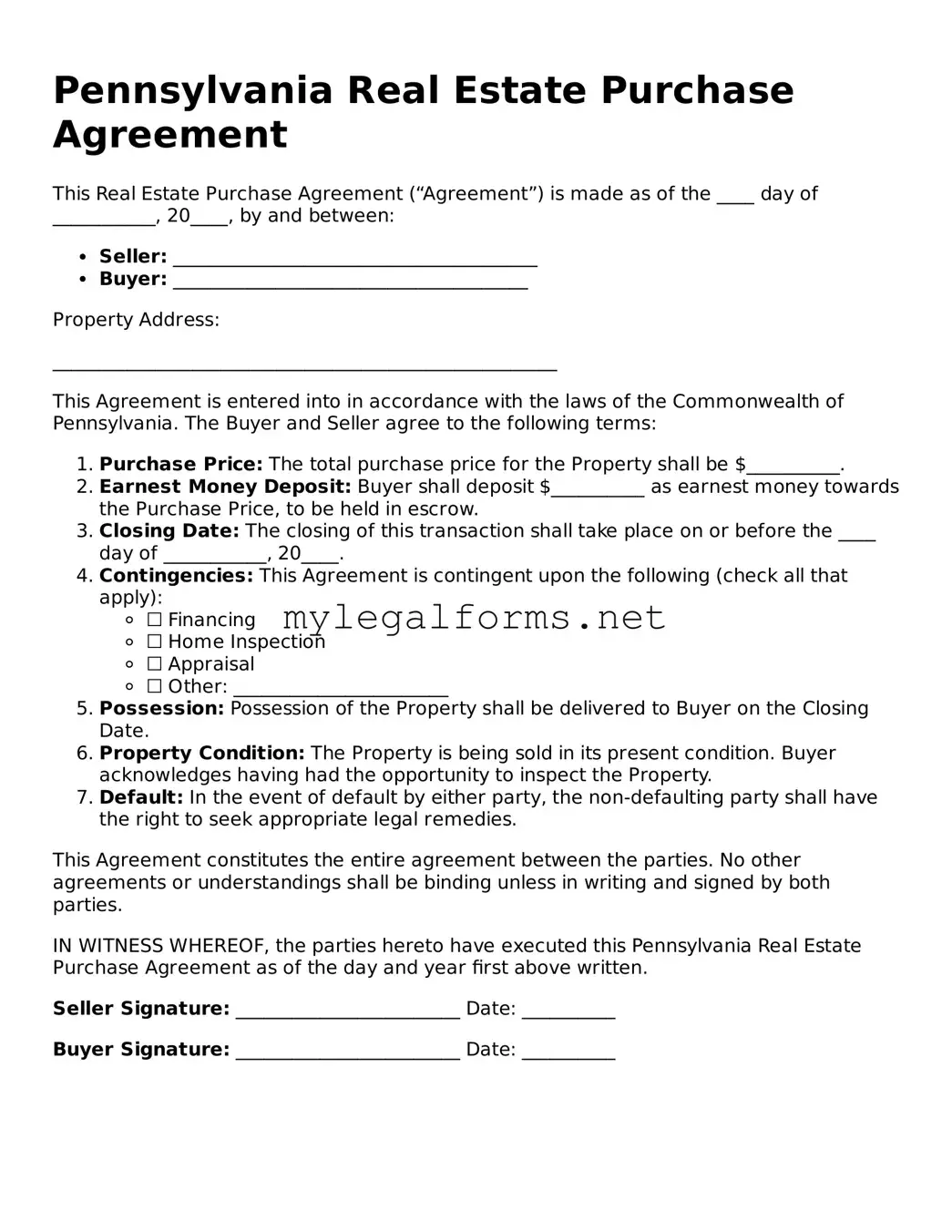Pennsylvania Real Estate Purchase Agreement
This Real Estate Purchase Agreement (“Agreement”) is made as of the ____ day of ___________, 20____, by and between:
- Seller: _______________________________________
- Buyer: ______________________________________
Property Address:
______________________________________________________
This Agreement is entered into in accordance with the laws of the Commonwealth of Pennsylvania. The Buyer and Seller agree to the following terms:
- Purchase Price: The total purchase price for the Property shall be $__________.
- Earnest Money Deposit: Buyer shall deposit $__________ as earnest money towards the Purchase Price, to be held in escrow.
- Closing Date: The closing of this transaction shall take place on or before the ____ day of ___________, 20____.
- Contingencies: This Agreement is contingent upon the following (check all that apply):
- ☐ Financing
- ☐ Home Inspection
- ☐ Appraisal
- ☐ Other: _______________________
- Possession: Possession of the Property shall be delivered to Buyer on the Closing Date.
- Property Condition: The Property is being sold in its present condition. Buyer acknowledges having had the opportunity to inspect the Property.
- Default: In the event of default by either party, the non-defaulting party shall have the right to seek appropriate legal remedies.
This Agreement constitutes the entire agreement between the parties. No other agreements or understandings shall be binding unless in writing and signed by both parties.
IN WITNESS WHEREOF, the parties hereto have executed this Pennsylvania Real Estate Purchase Agreement as of the day and year first above written.
Seller Signature: ________________________ Date: __________
Buyer Signature: ________________________ Date: __________
